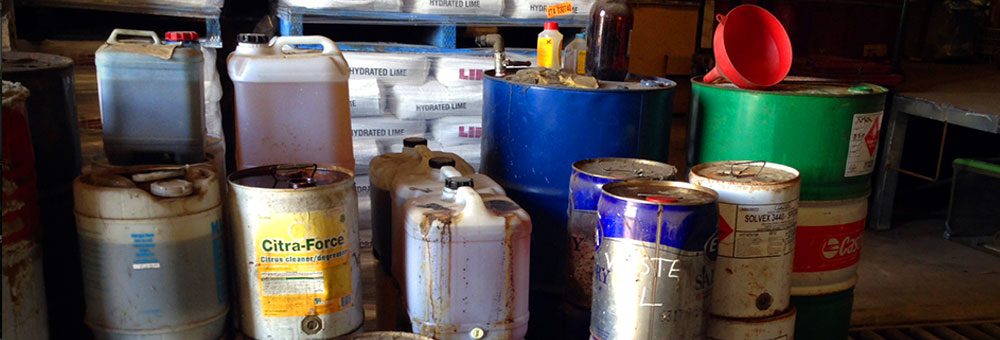Recognizing the Comprehensive Refine of Fluid Waste Disposal: Ideal Practices and Environmental Impact Factors To Consider
The administration of liquid garbage disposal is a complex concern that calls for a complete understanding of different ideal methods and their associated environmental effects. From the kinds of liquid waste created to the methods used for collection, therapy, and final disposal, each action plays a critical function in guarding environments and public health and wellness. As regulatory standards evolve and modern technology breakthroughs, the discussion around these processes becomes significantly pertinent. What ramifications do these changes hold for future sustainability initiatives, and exactly how can stakeholders guarantee that they are properly attended to?
Sorts Of Fluid Waste
Comprehending the different kinds of fluid waste is necessary for efficient monitoring and disposal methods. Liquid waste can be broadly classified into numerous types, each calling for special handling and therapy approaches.
Industrial liquid waste often includes unsafe materials, including hefty steels, solvents, and chemicals, produced throughout producing procedures. These wastes demand stringent governing compliance to shield human health and the setting. Residential liquid waste mostly describes wastewater produced from homes, consisting of sewage and greywater, which, although much less harmful, can still position substantial dangers if incorrectly managed.
Agricultural liquid waste, including drainage from ranches, typically consists of fertilizers and chemicals that can lead to environmental destruction otherwise dealt with sufficiently. Clinical liquid waste, produced from health care facilities, consists of contaminated fluids such as bodily liquids and chemicals, needing specialized disposal methods to stop infection and environmental contamination.
Last but not least, oil and oil waste, typically created by dining establishments and automotive markets, can create serious blockages in sewer systems otherwise taken care of effectively. Recognizing these groups facilitates targeted approaches for therapy, conformity with guidelines, and effective disposal methods, inevitably advertising ecological sustainability and public health and wellness safety.

Collection Methods
Effective collection approaches are critical for the appropriate management of fluid waste, making certain that it is gathered securely and effectively prior to treatment or disposal. Numerous methods are employed depending on the type of fluid waste generated, the quantity, and the specific qualities of the waste.
One typical approach is using specialized collection containers or sumps, which are created to capture fluid waste at the source. These systems frequently incorporate pumps that promote the transfer of waste to larger storage space containers or therapy centers. Additionally, mobile collection systems outfitted with vacuum innovation are used in situations where waste is produced periodically or in hard-to-reach places.
For industrial settings, closed-loop systems can properly minimize spills and leaks, permitting the recovery and reuse of liquid waste. It is likewise necessary to educate personnel on correct collection procedures to alleviate threats related to harmful substances.
Additionally, applying regular upkeep schedules for collection devices makes sure optimum efficiency and safety and security. The combination of sophisticated surveillance systems can boost collection performance by supplying real-time information on waste levels and prospective dangers. In general, reliable collection techniques are fundamental to lasting fluid waste management practices.
Therapy Processes
Treatment processes play a vital role in the administration of liquid waste, changing potentially hazardous materials into secure effluents or recyclable sources - liquid waste disposal. These processes can be extensively categorized into physical, chemical, and biological techniques, each tailored to deal with particular contaminants present in the waste stream
Physical therapy approaches, such as sedimentation and purification, work by removing put on hold solids and particle issue. These methods are commonly the very first step in the therapy chain, properly reducing the lots on subsequent processes. Chemical treatments entail the usage of reagents to neutralize damaging substances, speed up hefty metals, or oxidize natural contaminants, thereby boosting the security of the effluent.
Biological therapy procedures, consisting of triggered sludge systems and anaerobic food digestion, maximize the natural abilities click for more info of microbes to deteriorate raw material. These techniques are specifically efficient for wastewater having naturally degradable toxins. Advanced treatment innovations, such as membrane layer filtration and progressed oxidation procedures, are increasingly utilized to attain higher levels of filtration.
Incorporating a combination of these therapy approaches not just makes sure conformity with regulatory requirements yet additionally promotes environmental sustainability by recuperating beneficial sources from fluid waste.
Disposal Options
Exactly how can companies make certain the liable and safe disposal of fluid waste? Efficient disposal choices are crucial for safeguarding public health and wellness and the environment. The key approaches include land disposal, therapy, and incineration adhered to by discharge into local wastewater systems.
Land disposal entails the mindful control of fluid waste in designated garbage dumps, making sure that it does not seep into surrounding soil or water. Incineration, on the other hand, subjects fluid waste to high temperatures, converting it into ash and gases, which require correct filtration to reduce discharges. This technique appropriates for dangerous wastes that can not be treated with standard ways.
In cases their explanation where liquid waste can be dealt with, companies might choose chemical or organic treatment processes to neutralize hazardous elements before discharging the dealt with effluent into municipal systems. This route generally straightens with governing demands, making certain that the effluent satisfies safety and security criteria.
Ultimately, organizations have to conduct detailed analyses of each disposal choice to identify its practicality, considering elements such as waste composition, governing compliance, and potential dangers to health and wellness and the environment. By picking suitable disposal approaches, services can add to a responsible waste administration strategy.
Ecological Impact
The ecological effect of fluid waste disposal is a crucial consideration for companies seeking to reduce their environmental impact. Additionally, the discharge of neglected or improperly dealt with waste right into surface area waters can result in eutrophication, leading to oxygen depletion and the subsequent fatality of fish and various other microorganisms.

To minimize these effects, browse around these guys organizations should embrace finest practices such as executing rigorous waste therapy processes, advertising recycling and reuse, and sticking to regulative standards. By taking a proactive method to liquid waste monitoring, entities can dramatically decrease their ecological footprint while supporting lasting advancement goals. Eventually, a comprehensive understanding of the ecological effects related to liquid garbage disposal is necessary for notified decision-making and liable stewardship of all-natural sources.
Verdict
Effective monitoring of liquid waste is important for protecting ecological stability and public health. By taking on best practices in treatment, disposal, and collection, together with adherence to regulatory standards, the possibility for hazardous contamination of communities can be significantly minimized. Constant improvements in innovation and procedures contribute to lasting waste administration initiatives. Eventually, a thorough understanding of liquid waste disposal not just minimizes ecological influences however also cultivates a dedication to accountable source administration and ecological stewardship.
The administration of fluid waste disposal is a complex issue that requires a detailed understanding of various finest practices and their connected environmental effects. From the kinds of liquid waste created to the techniques utilized for collection, therapy, and last disposal, each action plays a critical role in protecting communities and public wellness.The ecological influence of fluid waste disposal is a critical consideration for organizations seeking to minimize their ecological footprint. Ultimately, a detailed understanding of the environmental effects associated with liquid waste disposal is important for notified decision-making and accountable stewardship of natural resources.
Inevitably, a comprehensive understanding of fluid waste disposal not just alleviates ecological effects however likewise promotes a commitment to responsible source administration and environmental stewardship.
 Dylan and Cole Sprouse Then & Now!
Dylan and Cole Sprouse Then & Now! Romeo Miller Then & Now!
Romeo Miller Then & Now! Michael C. Maronna Then & Now!
Michael C. Maronna Then & Now! Nancy McKeon Then & Now!
Nancy McKeon Then & Now! Phoebe Cates Then & Now!
Phoebe Cates Then & Now!